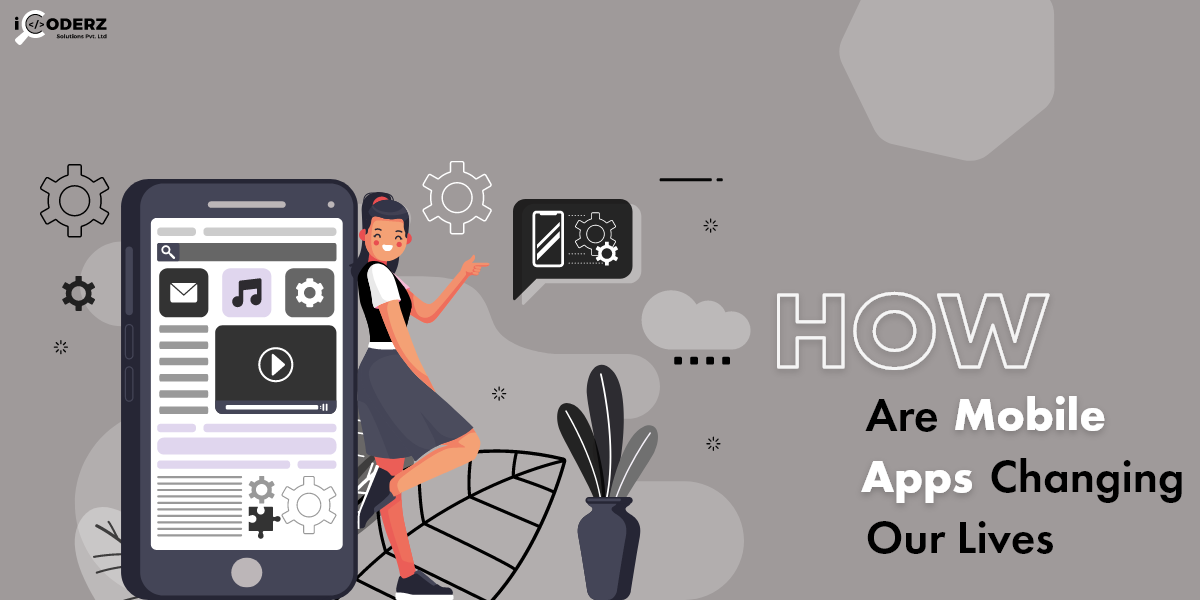Mobile app development has become an integral aspect of every business these days.
With startups across the globe wanting to excel these days, selecting the ideal development partner has become very significant. Hence, before doing research on the net for web and mobile app development companies, these critical aspects deserve your attention.
A peek into crucial stats
As per Statista, as of Q2 2020, Android users chose between 2.7 million apps, presenting Google as the major hub with a large number of mobile apps. Being not too far behind, Apple’s app store remains firm at second spot with roughly 1.82 million apps for iOS.
This clearly showcases the increased demand for mobile apps. Also, as per App Annie, an average mobile user takes recourse to nine apps every day and approximately 30% in a month. We devote 3 hours daily on our mobiles, out of which 90% of the time goes to apps. This proves that apps have become a significant part of our daily lives.
However, mobile apps have to win users’ hearts and minds by providing them a higher ROI (Return On Investment).
- There are two demurs that make business owners wary:
- Who happens to be the ideal developer for your project?
- What will be the expenditure of Mobile app development?
As the financial aspect differs subject to the initial needs, technology stack, business requirements and awaited results, we want to assist you in analyzing the method of selecting the company that helps your business reach greater heights.
THINGS TO LOOK INTO PRIOR TO SELECTING AN APP DEVELOPMENT COMPANY?
- The ideal quality you want in your partner
- The money you wish to invest on the project
- The deadline and timeline of the project,
- The planning of working – “The Agile Methodology” to accomplish the project,
- The technical help required from the firm,
- The level of customer involvement.
While fixing the budget with the development company, you have to make sure that there are certain aspects that shape the cost to develop a mobile app.
These factors happen to be architecture and team strength, the platform for project development and whether a need to merge your app with third-party solutions will arise or not. In order to develop a mobile app, the majority of firms seek $25,000 for a normal app and $1,00,000 for a complex and tough app. However, a good app company will provide you with a project estimation free of cost instead of asking for a budget.
The cost and the size of the project also specify whether you need a firm or a freelancer. Of course, if it is a complex project then a seasoned and bigger team with requisite skills are required.
PLACE TO FIND AN IDEAL MOBILE APP DEVELOPMENT PARTNER
SEEK REFERRALS AND SUGGESTIONS
The appropriate app development company has to be your loyal partner. Therefore ensure that you work with talented and experienced professionals, make the right use of your professional network and don’t be reluctant to seek referrals and recommendations.
Talk to your friends and trusted business partners to get their experience and contacts for the respective firm. This is an ideal knowledge source but keep in mind that each project is different, so seek the details.
SIMPLY, GOOGLE IT!
This is an ideal process. Assuming that you have searched for the ideal mobile app development company in India, go through the websites of the firms thoroughly, closely watch their portfolio, verify their experience and referrals and then write down the companies you find appropriate.
TAKE HELP FROM B2B AND B2C PLATFORMS
The IT companies such as Clutch, Linkedin etc happen to be very trustworthy sources to find the right fit for your project. These websites provide a list of IT service providers. There are also other platforms where you can find freelancers, like UpWork. Verify the reviews of each firm and freelancers as well, check their portfolio, certification and awards won by them.
ASPECTS TO CONSIDER WHILE SELECTING AN APP DEVELOPMENT COMPANY
TECHNICAL PROFICIENCY
There happen to be various procedures of developing mobile apps however, only a few platforms to build them. Every app development journey varies from the other and needs a unique skill set and technology stacks. You have the liberty to select from Native app development to cross-platform app development, based on your requirements. Therefore, to develop your own app, choose the partner with caution. Moreover, a mobile app development company is not just a service provider, but it offers consultation. In case you are in a limbo over the next step in your app development process, choose a company having good consultancy skills. Also see if it gives you seasoned designers, quality assurance specialists, and growth consultants.
TEAM STRENGTH AND MARKET SIZE
It is imperative to get an insight into the market capture of the company you are thinking of selecting as a partner for your project. Assess or seek their team size of designers, developers, testers, UX/UI professionals, QA experts working currently in the company.
Further, get clarity over their hiring plans – do they wish to expand or simply trying to save a ship from sinking.
EXPOSURE & PROFILE MATTER A LOT
Never have any reservation with regard to asking crucial questions about their recent projects. Kindly go through their portfolio and observe reviews and clients testimonials for the app built in the respective app stores. Also, ask the firm about their experiences.
Have they worked on similar projects earlier?
How did they tackle technical complexities in past projects?
Do they possess work experience regarding your business domain?
BE CLEAR ON THE ASPECT OF PRICING
The cost of the project is very critical, but it should not be the only criteria. Never fall for a chap option as it won’t serve any purpose for you. It is better to avoid a company during the initial stage itself than fixing problems with the app after the launch.
Quality should be given high priority while choosing the app development company for your project. Quality goes a long way in expediting the development process and making it affordable going forward. So, do not forget to validate the payment methods and terms while talking about the project’s details. What is the method of calculating the price? Will it be a total payment upfront or scattered in installment.
CLEAR CUT COMMUNICATION
Clear and good communication is very essential for your mobile app development project to succeed. You should be in the know of each and every thing in the development process. For this to happen, you should seek the medium of communication while choosing your partner.
For example, you should have total project information constantly to monitor the progress efficiently. Talk to them regarding the tools they utilize to handle the way a project is moving: Asana, Slack, Jira etc. Also while choosing a firm, observe closely the regularity with which a firm responds to your queries, messages and phone calls.
TEAM STRENGTH
What really turns a project successful is team efforts and diligence. The skill matrix and personalities are very significant, to build a successful mobile app. Also, you should have a great rapport with your technological ally to leverage development procedures. Hence, don’t be reluctant to talk to the company’s representative and create good relations with them. The environment of the project’s team creates a durable impact in ensuring the success as well.
CLIENT’S TESTIMONIALS
Always seek references and client testimonials from prospective partners. The ideal development companies provide you with anything without any request from your side. If the firm does not have a letter of recommendation or client testimonials to showcase, then simply move away from them. Also, cross check the materials given and look for some references on your own.
ACHIEVEMENTS & REFERRALS
Experience has to be one of the criteria to factor in for you to choose an ideal company. Experience is usually showcased by various awards for top projects the company has undertaken, recognitions in the media, or the result of R&D projects published on platforms such as Dribble and Github. Mobile app development is not an easy task and it needs accuracy and experience, a holistic knowledge of the target audience, and, of course, creativity. These skill sets can be obtained with experience. Recent projects give a clear view of the way a trusted company plans and operates. If they have a solid profile of big, ambitious projects then the same reflects positively on their qualities.
QUALITY AND MAINTENANCE ARE VITAL
Do not forget the fact that launching your mobile app in the app store is simply the beginning. It is just the beginning of a long procedure of regularly launching updates, handling bugs and including new features to turn your app useful and keep it ahead of the competitors.
This means it’s a must to select the apt and skilled resources with a clear cut policy that follows app maintenance and support to the core. Prior to moving ahead, assess these policies:
The cost according to each new app launch
After the launch, long-term and ongoing assistance
Handling bugs and charging accordingly
To Conclude
It is in your best interest to jot down all aspects of the best mobile app development procedure to ensure every condition is met. By doing this you can eliminate the hiccups to a great extent and focus on the important facets of your mobile app and take the right call quickly. It must have been clear to you by now that the best app development company is the one having technical exposure, great communication skills, good portfolio of successful projects and the burning desire to excel. Finally, in order to achieve desired results from the app it is critical to hire app developers carefully. A wrong move can hurt you financially and spoils the growth of your company. So, it is ideal to get good developers on board for your app project to prosper.




